- Home
- Shanna Hatfield
Lightning and Lawmen Page 26
Lightning and Lawmen Read online
Page 26
“Well, he almost deserves to have them.” Delilah glanced at him as she absently pet the raccoon.
Dugan’s left eyebrow cocked upward. “Almost?”
“I wouldn’t wish that on anyone.” She sighed and ran her fingers through Dugan’s hair. “Why are we discussing something so tragic on our wedding day?”
“Why, indeed?” he asked, pulling her against him with his free hand and kissing her without a speck of the restraint he’d shown earlier.
When he finally came up for air, Tully slapped him on the back and Seth nudged his side.
“Lily would fully approve of that slobbery kiss,” Seth teased.
“I think I might need more practice,” Dugan said, leaning toward Delilah. She ducked and burrowed her face into his neck. He chuckled and handed Oliver to Sammy as the little girl walked by then wrapped both arms around his wife. “I love you, Dilly, girl.”
Delilah felt like she’d been swept into a beautiful dream. She’d just married the man who’d thoroughly captured her heart and captivated her very soul. Dugan was everything she could ever hope to find in a husband, but hadn’t realized she’d needed.
Tears had sprung to her eyes when Maggie walked into the room where she and Brianna were helping her get ready for the wedding with a small box wrapped in silver paper and tied with a blue ribbon.
She’d opened the box and been overcome with emotion at the exquisitely crafted cameo Dugan had sent to her. The note in the box simply read:
I saw this and thought of you… not just because of the birds, but because it’s elegant, lovely, and unique. I love you, Dilly.
Yours forever,
Dugan
Even if Maggie and Brianna hadn’t insisted she wear the cameo with her wedding gown, nothing could have stopped her from putting it on. All the while she was waiting for her father to arrive and escort her down the aisle, her fingers rubbed the cameo, feeling somehow closer to Dugan because of it.
He’d looked so handsome at the wedding. The cut of his new suit fit him perfectly, accentuating his broad shoulders, long legs, and sculpted form. He’d shaved off the scruff he so often sported on his face, but she wouldn’t have minded if he’d left it. It just made him look more rugged in her opinion. When she’d stepped next to him and her father handed her into his keeping, she’d seen the love shimmering in his gorgeous blue eyes and admired, once again, the raw beauty of his form and face.
Why she loved him, though — loved him with every beat of her heart — was not for how he looked, but for who he was. Dugan Durfey was a tender, gentle, caring man who would do anything for those he loved, but especially for her. He’d shown her over and over again since she’d arrived in Baker City how much he loved her, even if she’d failed to see it until it was almost too late.
She supposed she should be grateful for Seth’s interference, since it ultimately worked to her benefit. It was hard to fathom how hard he’d worked to convince Dugan he intended to court her, but he’d done a good job of it.
Now, she watched as Seth teased Dugan about something and her husband’s neck turned red. She probably didn’t want to know what the two of them said. They were closer than any brothers she’d ever seen and she hoped Dugan would continue that relationship with his friend.
As the reception wound down and guests began to leave, Delilah wished she and Dugan could slip away. She knew a bride shouldn’t be quite so eager for her wedding night, but Delilah loved the feel of being held in Dugan’s powerful arms and his kisses… oh, the things his kisses did to her.
Just thinking about them made her stomach flutter. She looked across the yard again and caught Dugan’s eye. He gave her a private, intimate smile. One that caused her knees to quake and waves of sparks to flood through her veins.
He said something to Seth, but didn’t break eye contact with her. Instead, he purposefully made his way across the yard until he stood with the toes of his polished boots beneath her skirts.
“Mrs. Durfey, I do believe you summoned me,” he said, lacing their fingers together.
“Why would you think that?” she asked, coyly batting her eyelashes at him as he slowly backed her toward the porch steps. A sound near her ear made her turn her head. Together they watched as a pair of hummingbirds zipped by then sipped from the nectar she’d made fresh for them that morning.
Dugan leaned down and whispered in her ear. “I plan to buzz around you, savoring your sweet nectar for a long, long time, Dilly girl.”
She whipped her head around so fast, their cheeks bumped and Dugan chuckled softly. “I’ve gallantly put up with all this fuss and bother today, but I’m ready to take my wife home. Any arguments?”
Delilah shook her head. “None from me, Dugan. I’m ready to go home. With you.”
He glanced around them then took her hand and pulled her up the porch steps and into the house, women milled around the kitchen, but he paid them no mind as he led Delilah into the hall and to the front door. Quickly sweeping her into his arms, he carried her down the front porch steps, along the walk, and out the gate to a waiting buggy driven by Seth.
“What do have here?” Seth teased as Dugan set Delilah on the back seat and climbed in beside her. “If I didn’t know better, I’d say you two are trying to run away from your own party.”
“That’s the general idea.” Dugan tapped Seth on the back then wrapped his arm around Delilah, pulling her close to his side. “Straight home, if you please my good man,” he said in a clipped British accent.
Seth chuckled. “You learn that from Edwin Greenfield?”
“Righty ho, what?” Dugan said in a perfect imitation of the man.
Delilah laughed. “I dare you to do that in front of him, or Jemma, for that matter.”
“I don’t need my ears boxed, so I won’t take that dare,” Dugan said, kissing the top of her head.
A few minutes later, Seth pulled up on front of Dugan’s house and glanced back at them. “I’ll take care of the chores so you won’t have to worry about them.”
Dugan got out and shook Seth’s hand. “Thank you, my friend. I’ll do the same for you when you find a woman you can’t live without.”
Seth snorted. “The likelihood of lightning striking me dead in the next five seconds has a much higher chance of happening than me marrying, but I’ll keep your offer in mind.”
Delilah stood and started to step out of the buggy, but before she could move, Dugan again lifted her in his arms. She laughed as he blew one of the ruffles from her dress off his face.
She smiled at their driver. “Thank you, Seth!”
“My pleasure, Delilah. Enjoy your evening.” Seth snapped the reins and drove the buggy down to the barn while Dugan carried Delilah up the steps and inside his home. Their home.
She’d only been in the house a few times, but she admired the gleaming hardwood floor, the light streaming through the sparkling windows, and the smell of flowers in the air.
Vases and baskets of flowers of all varieties were tucked here and there throughout the house.
“Did you pick all these?” she asked, snagging a daisy from a bouquet of wildflowers on the small entry table.
“No. I had a lot of help the last few days,” he said, carrying her through the house to the kitchen.
Dusk had just fallen as he opened the door and stepped outside with her held tenderly in his arms.
“Oh, Dugan. It’s lovely!” she said, looking around his yard. Chinese lanterns hung in the trees. Ribbons fluttered from branches and huge baskets of flowers surrounded a table draped in white linen. Candles glowed and a picnic basket promised a feast for their dinner. “I love it!”
“And I love you,” he said, kissing her with such ardor, she never wanted him to stop, never wanted to be anywhere but in his arms.
When he lifted his head long moments later and smiled at her, her heart felt like it would burst with love for him.
“I know you’ll miss your beautiful garden at your father’s house, but I
hope you’ll turn our yard into a haven for your birds, and even Oliver, too.”
She placed her hands on his cheeks and looked into his eyes. And in the depths of them, she saw a happy, long future full of passion, hope, and enduring love.
“You are the most wonderful man in the world, Dugan Durfey. Thank you for making me your wife.”
He shook his head and kissed her cheek. “Thank you for making me so happy, Dilly, by giving me your love. May it bloom in our hearts each and every day.”
Recipe
Do you suppose Dugan really thought Porcupine meatloaf was made with… porcupine? Eww!
As I was looking up recipes, I found one from the turn of the century that showed an illustration of forming a loaf that loosely resembled a porcupine and using crumbled pieces of cooked bacon poked into the loaf as the quills.
Here’s a recipe that is easy to make in our modern kitchens of today!
Porcupine Meatloaf
1 pound extra-lean ground beef
½ cup uncooked white rice (instant or minute rice)
¼ cup finely-chopped onion
1 clove garlic, minced
1 teaspoon salt
1 teaspoon all-seasoning (like Mrs. Dash)
1 tablespoon minced parsley
2 teaspoons Worcestershire sauce
1 egg, beaten
¼ cup tomato ketchup
¼ cup skim or non-fat milk
¼ cup dry bread crumbs
½ cup crumbled bacon (optional)
Preheat the oven to 350 degrees F. Line a baking sheet with foil and spray with non-stick cooking spray.
In a large bowl, combine the ground beef, uncooked rice, seasonings, parsley, Worcestershire sauce, egg, ketchup, milk, and bread crumbs. Mix together thoroughly but lightly, being careful not to pack the meat too much. This meatloaf mixture will be moister than most recipes at this point. The extra liquid is needed for the rice to absorb while cooking. Place in prepared loaf pan. If desired, poke bacon crumbles into the loaf to resemble quills.
Bake 30 to 40 minutes or until meatloaf reaches an internal temperature of 160 degrees F. (do not overcook or it will be dry). Remove from oven and let the meatloaf rest for 15 minutes before serving. Makes approximately four servings.
Author’s Note
Thank you for coming along on another Baker City Brides adventure. I love getting to spend time with the sassy and rugged characters from this series.
Unlike Delilah, I’m not much of a bird watcher. But since I started researching this story, I find myself listening more closely to the birdsong outside and looking to see which little feathered friend is offering the serenade.
I happened upon an old book, written during the Edwardian era, which offered a list of birds found in Baker County during the 1890s. Among the expansive list were sandpipers, mourning doves, turkey vultures, various hawks, osprey, owls, kingbirds, magpies, crows, meadowlarks, finches, sparrows, sage thrasher, swallows, chickadees, juncos, robins, bluebirds, and calliope hummingbirds. If you’ve never seen a calliope hummingbird, their colors are quite spectacular and they are listed as the tiniest North American bird.
During the time period of this story, the Audubon Society had not yet formed although protecting water bird populations was a hot topic among many ornithologists. The slaughter of millions of water birds, particularly egrets and other waders, for the millinery trade, led to the foundation of the Massachusetts Audubon Society in 1896 by Harriet Hemenway and Mina Hall. By 1905, the National Audubon Society was founded, placing the protection of gulls, terns, egrets, herons and other water birds high on its priority list for conservation.
In the story, Delilah belongs to the American Ornithologists’ Union. The AOU was founded in 1883 out of concern for bird conservation and interest in developing the field of ornithology in North America. It is said those early efforts led to the formation of the Audubon Society as well as the Biological Survey (known today as the U.S. Fish and Wildlife Service). At one time, the AOU was the largest ornithological society in the Western Hemisphere and one of the oldest organizations in the world devoted to the study and conservation of birds. The AOU archives are housed at the Smithsonian Institution.
As a dedicated ornithologist, can’t you just see Delilah, pencil and sketchpad in hand, sitting on a tree limb and watching one of her beloved birds.
From my research into Baker City, I knew the town had a meteorological station. What I didn’t know was why. But I found that information as I delved into the past.
Weather, it seems, has always been important to the citizenry of the United States. As far back as the 1600s, colonists kept records of the weather, noting the harshness of the New World. Many of the Founding Fathers observed the weather with avid interest including Thomas Jefferson and George Washington. During the early and mid 1800s, weather observation networks began to grow and expand across the United States.
Then the telegraph became operational in 1845 and visionaries saw the possibility of forecasting storms simply by telegraphing ahead what was coming. A man named Joseph Henry, Secretary of the new Smithsonian Institution, envisioned communication system opportunities that could extend across the North American continent. A plan was approved in 1848 for volunteer observers who could report the weather via telegraph and by the end of 1849, 150 volunteers were reporting weather observations to the Smithsonian regularly. By 1860, five hundred stations were daily furnishing weather reports.
President Ulysses S. Grant signed into law a resolution in February 1870 that established an agency for reporting the weather. Although the brief resolution was given little press at the time, the agency it created would affect the daily lives of most citizens through its forecast and warnings.
Through the resolution, weather stations would operate under the War Department’s Signal Service Corps. This organization, The Division of Telegrams and Reports for the Benefit of Commerce, laid the ground work for the National Weather Service we know today. On November 1, 1870, the first synchronous meteorological reports were taken by observer/sergeants at twenty-four stations in the new agency and transmitted by telegraph to the central office in Washington, D.C.
The work of the new organization demanded men familiar with observations, theoretic, and practical meteorology. Commissioned officers detailed to Signal Service work were required to acquire meteorological knowledge by studying, consulting and learning from leading meteorologists of the time. For the education of the weather observers (enlisted men), a school of meteorology was added to the existing school of instruction in telegraphy and military signaling located at Fort Whipple (Fort Myer), Virginia.
The Signal Service’s field stations grew from twenty four to almost three hundred in 1878. Three times a day, each station telegraphed an observation to the home office including observations about the barometric pressure, temperature, humidity, wind velocity, pressure of wind, clouds, and general state of the weather.
One such station existed in Boise, Idaho, but it closed just two days before Idaho became a state in July 1890 and moved to Baker City. Baker City was chosen for its location where it was deemed a great place to collect reports of a variety of weather.
Then, in July 1891, the weather stations, telegraph lines, apparatus, and all the office equipment right down to every accounted-for pencil were transferred from the Signal Corps to the U.S. Department of Agriculture’s newly formed civilian Weather Bureau. The bureau created the basis of the weather service we know today.
Baker City is home to a wonderful museum housed in what was once a natatorium, built in the 1920s. The Baker Heritage Museum offers everything from glimpses into the lives of prominent historical figures of the area and a fun display of Paint Your Wagon memorabilia to an amazing collection of rocks and minerals. If you ever find yourself in Baker City, make time to visit the museum, located right across the street from the park and close to the library. The beautiful cobalt color of one of the crystals there gave me the idea for the color of Seth Harter
’s eyes.
In today’s modern world, I think it’s safe to say most of us don’t give a thought to rabies. Perhaps we should.
Rabies is a dangerous virus spread through the saliva of animals sick with the disease. Anyone can get it if they handle or are bitten by an animal with the virus. What was shocking to me as I did a little research on rabies was the number of people who contract it every year. Around 40,000 people in the United States (and a reported 15 million worldwide) receive a rabies prevention treatment called post-exposure prophylaxis because they had contact with a potentially rabid animal.
In the United States, an average of less than four cases of rabies are reported in humans each year, but worldwide, an average of 60,000 people die every year from rabies. Left untreated at the time of exposure, the disease is most often fatal.
I truly had no idea that people today still perish from rabies. Be careful out there.
You might be asking yourself why I included a raccoon in the story. The answer is for several reasons. A raccoon played well into the concern about rabies stirred by Elmer Muldoon’s horrible demise. The furry little critter also made an unlikely yet unique pet for Delilah. And it gave me an opportunity to recall a fun pet from my childhood.
My oldest brother acquired a raccoon and brought it home to his house just down the hill from my parents’ home. I was young enough at the time, I don’t recall where or why he came to have it, but the raccoon spent a lot of time at our house. In fact, the raccoon developed quite a talent for removing the screen on one of the windows and sneaking inside the house. He could steal shiny treasures (like Mom’s watch) faster than you can blink.
Dad often would take a snack with him when he left the house after lunch, like a few cookies in his shirt pocket. One day, he was working in the shop and the raccoon started pawing and clawing at him. Dad thought for sure the beast had gone rabid. Turns out, he just wanted Dad’s cookies. I’m not sure who was the most relieved when the raccoon got the cookies and settled right down (but I’m guessing it was probably Dad!).

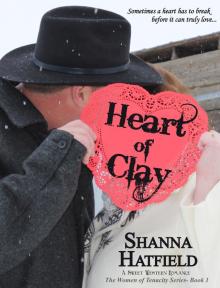 Heart of Clay
Heart of Clay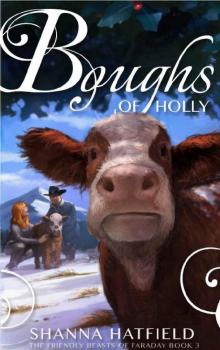 Boughs of Holly
Boughs of Holly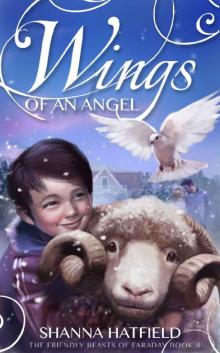 Wings of an Angel
Wings of an Angel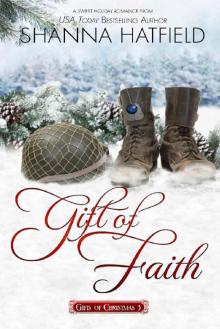 Gift of Faith
Gift of Faith Tidings of Joy
Tidings of Joy Between Christmas and Romance
Between Christmas and Romance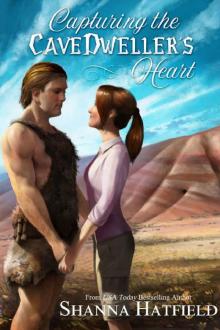 Capturing the Cavedweller's Heart
Capturing the Cavedweller's Heart Racing Christmas
Racing Christmas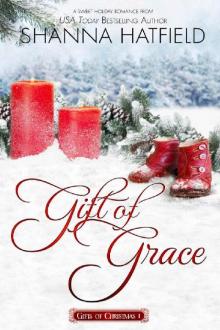 Gift of Grace
Gift of Grace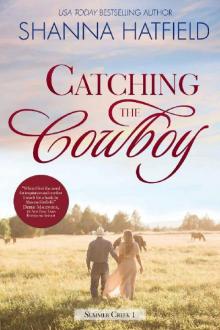 Catching the Cowboy: A Small-Town Clean Romance (Summer Creek Book 1)
Catching the Cowboy: A Small-Town Clean Romance (Summer Creek Book 1)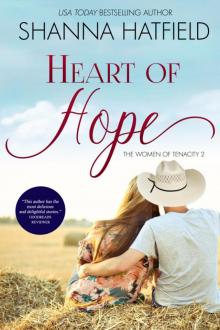 Heart of Hope
Heart of Hope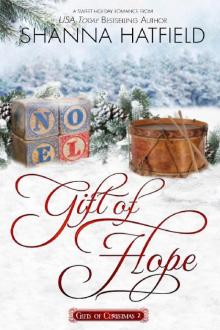 Gift of Hope
Gift of Hope The Christmas Cowboy: (Sweet Western Holiday Romance) (Rodeo Romance Book 1)
The Christmas Cowboy: (Sweet Western Holiday Romance) (Rodeo Romance Book 1)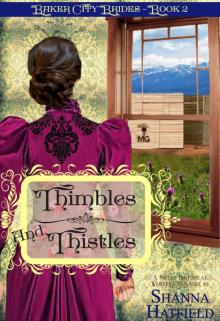 Thimbles and Thistles: (Sweet Historical Western Romance) (Baker City Brides Book 2)
Thimbles and Thistles: (Sweet Historical Western Romance) (Baker City Brides Book 2) The Cowboy's Autumn Fall (Grass Valley Cowboys Book 4)
The Cowboy's Autumn Fall (Grass Valley Cowboys Book 4)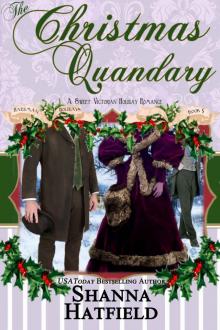 The Christmas Quandary: Sweet Historical Holiday Romance (Hardman Holidays Book 5)
The Christmas Quandary: Sweet Historical Holiday Romance (Hardman Holidays Book 5) Crumpets & Cowpies: (Sweet Historical Western Romance) (Baker City Brides Book 1)
Crumpets & Cowpies: (Sweet Historical Western Romance) (Baker City Brides Book 1)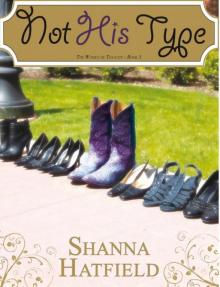 Not His Type
Not His Type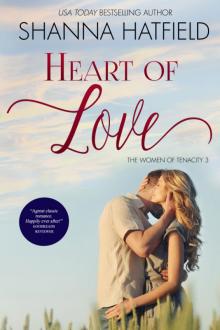 Heart of Love
Heart of Love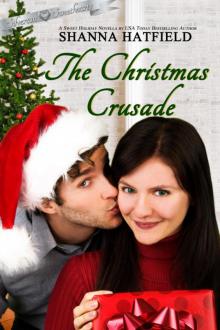 The Christmas Crusade
The Christmas Crusade Marnie:
Marnie: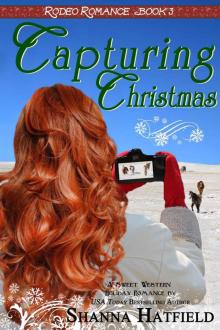 Capturing Christmas
Capturing Christmas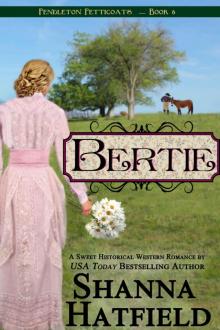 Bertie (Pendleton Petticoats Book 6)
Bertie (Pendleton Petticoats Book 6)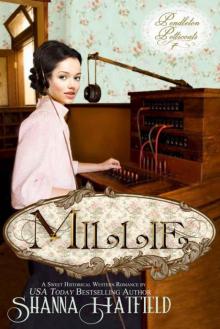 Millie (Pendleton Petticoats Book 7)
Millie (Pendleton Petticoats Book 7)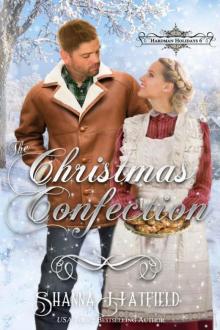 The Christmas Confection
The Christmas Confection The Christmas Token
The Christmas Token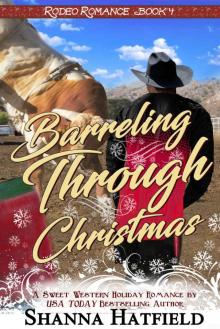 Barreling Through Christmas: (Sweet Western Holiday Romance) (Rodeo Romance Book 4)
Barreling Through Christmas: (Sweet Western Holiday Romance) (Rodeo Romance Book 4) Dream of Her Heart
Dream of Her Heart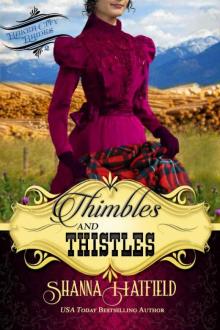 Thimbles And Thistles (Baker City Brides Book 2)
Thimbles And Thistles (Baker City Brides Book 2)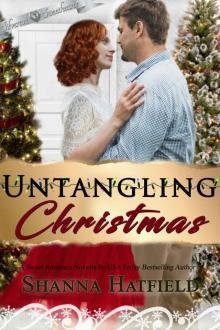 Untangling Christmas (Silverton Sweethearts Book 3)
Untangling Christmas (Silverton Sweethearts Book 3)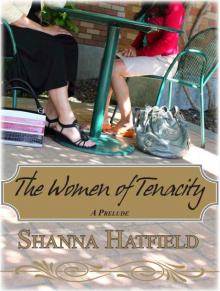 The Women of Tenacity
The Women of Tenacity Dacey: Bride of North Carolina (Amercan Mail-Order Bride 12)
Dacey: Bride of North Carolina (Amercan Mail-Order Bride 12)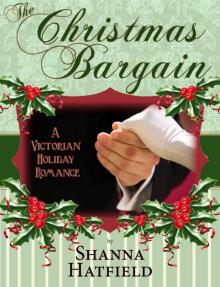 The Christmas Bargain
The Christmas Bargain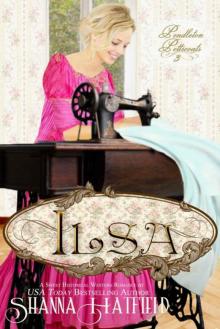 Ilsa (Pendleton Petticoats Book 3)
Ilsa (Pendleton Petticoats Book 3)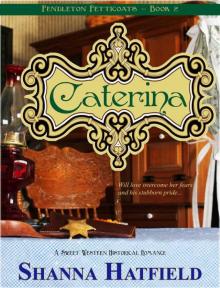 Caterina: A Sweet Western Historical Romance Pendleton Petyticoats Book 2
Caterina: A Sweet Western Historical Romance Pendleton Petyticoats Book 2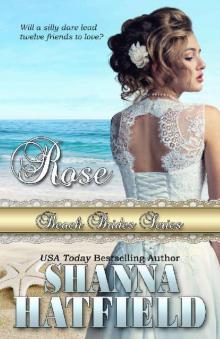 Rose (Beach Brides Book 9)
Rose (Beach Brides Book 9)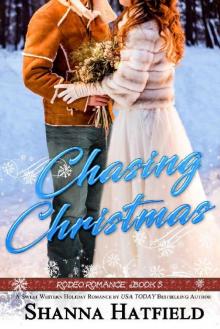 Chasing Christmas: (Sweet Holiday Western Romance) (Rodeo Romance Book 5)
Chasing Christmas: (Sweet Holiday Western Romance) (Rodeo Romance Book 5) Garden of Her Heart (Hearts of the War Book 1)
Garden of Her Heart (Hearts of the War Book 1) Ilsa:
Ilsa: The Coffee Girl
The Coffee Girl The Christmas Confection (Hardman Holidays Book 6)
The Christmas Confection (Hardman Holidays Book 6)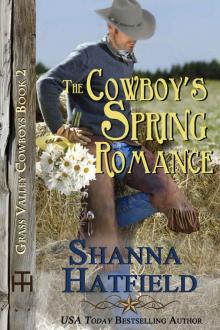 The Cowboy's Spring Romance
The Cowboy's Spring Romance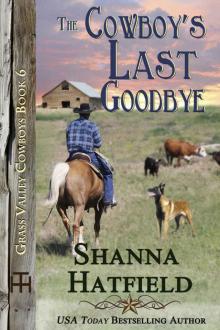 The Cowboy's Last Goodbye (Grass Valley Cowboys Book 6)
The Cowboy's Last Goodbye (Grass Valley Cowboys Book 6)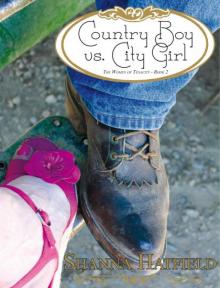 Country Boy vs. City Girl
Country Boy vs. City Girl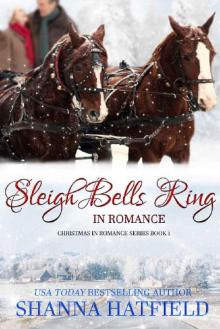 Sleigh Bells Ring in Romance
Sleigh Bells Ring in Romance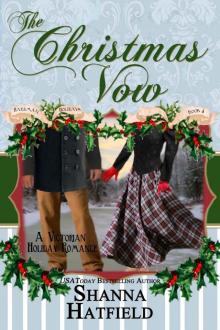 The Christmas Vow
The Christmas Vow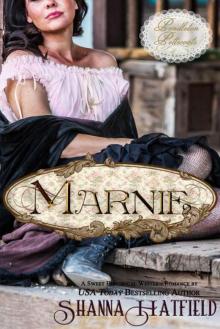 Marnie (Pendleton Petticoats Book 4)
Marnie (Pendleton Petticoats Book 4)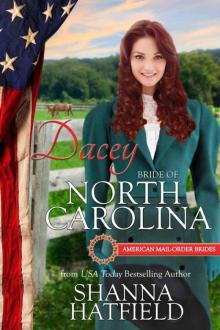 Dacey_Bride of North Carolina
Dacey_Bride of North Carolina Caterina (Pendleton Petticoats Book 2)
Caterina (Pendleton Petticoats Book 2)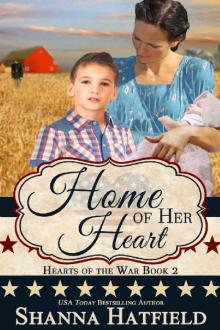 Home of Her Heart (Hearts of the War Book 2)
Home of Her Heart (Hearts of the War Book 2)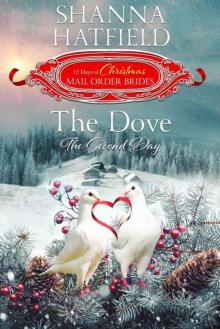 The Dove: The Second Day (The 12 Days 0f Christmas Mail-Order Brides Book 2)
The Dove: The Second Day (The 12 Days 0f Christmas Mail-Order Brides Book 2)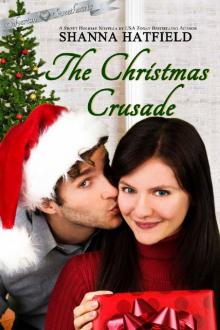 The Christmas Crusade (Silverton Sweethearts Book 2)
The Christmas Crusade (Silverton Sweethearts Book 2)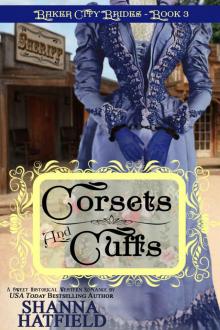 Corsets and Cuffs: (Sweet Historical Western Romance) (Baker City Brides Book 3)
Corsets and Cuffs: (Sweet Historical Western Romance) (Baker City Brides Book 3)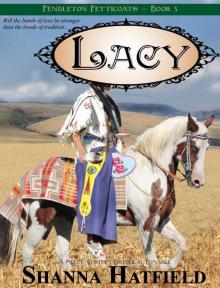 Lacy: (Sweet Historical Western Romance) (Pendleton Petticoats Book 5)
Lacy: (Sweet Historical Western Romance) (Pendleton Petticoats Book 5)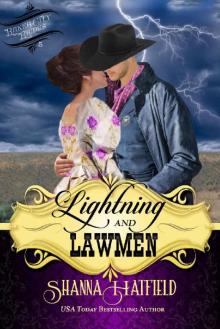 Lightning and Lawmen
Lightning and Lawmen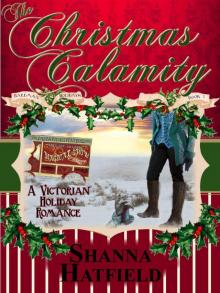 The Christmas Calamity
The Christmas Calamity The Cowboy's Autumn Fall
The Cowboy's Autumn Fall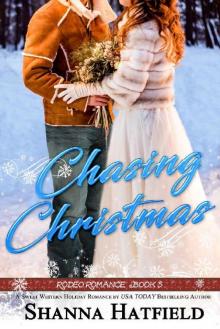 Chasing Christmas
Chasing Christmas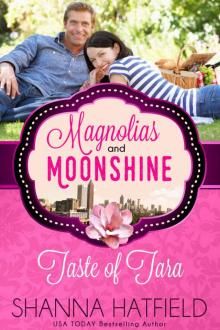 Taste of Tara
Taste of Tara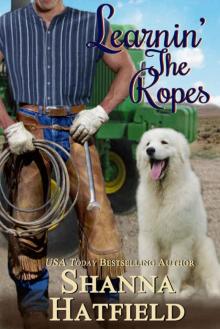 Learnin' The Ropes
Learnin' The Ropes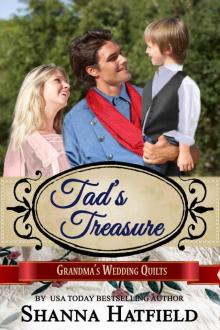 Tad's Treasure (Grandma's Wedding Quilts Book 12)
Tad's Treasure (Grandma's Wedding Quilts Book 12)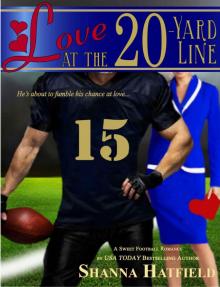 Love at the 20-Yard Line
Love at the 20-Yard Line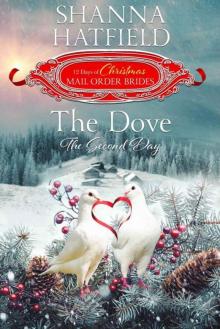 The Dove_The Second Day
The Dove_The Second Day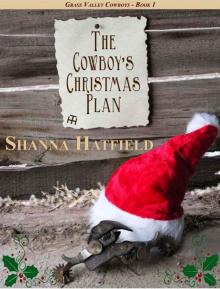 The Cowboy's Christmas Plan
The Cowboy's Christmas Plan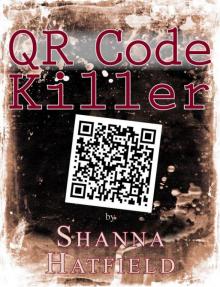 QR Code Killer
QR Code Killer Lightning and Lawmen (Baker City Brides Book 5)
Lightning and Lawmen (Baker City Brides Book 5)